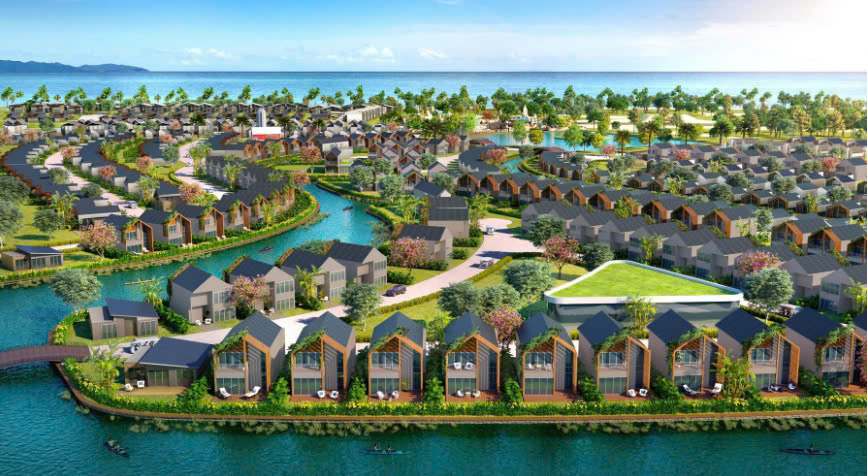Resort real estate has emerged as one of the most rapidly growing segments in Vietnam’s real estate market, thanks to the country’s diverse tourism potential and a developing economy. Recently, changes in the tourism landscape have led to shifts in the demand and development strategies of resort real estate projects.

1. Trends in Resort Real Estate Development
The rise of domestic tourism: In the context of limited international travel, domestic tourism in Vietnam has seen significant growth. Destinations such as Phu Quoc, Da Nang, Nha Trang, and Ha Long have become focal points for high-end resort real estate projects.
Long-term stay combined with working remotely: Instead of short vacations, there is a rising trend of combining travel with remote work, also known as "workcation." This trend is driving demand for resort real estate that offers spacious accommodations, comprehensive services, and stable internet connectivity.
Suburban resort real estate: As people seek to escape the hustle and bustle of city life while staying close to home, suburban resorts are becoming increasingly attractive. Projects near Hanoi, Ho Chi Minh City, such as in Ba Vi, Da Lat, or Vung Tau, are becoming appealing options.
2. Popular Types of Resort Real Estate
Resort villas: This is a high-end real estate type offering privacy and full amenities. These villas are often located in prime locations such as beaches or mountains, providing a luxurious and tranquil retreat experience.
Condotels: Combining the features of both apartments and hotels, condotels have become a popular choice due to their flexibility. Owners can rent them out when not in use, generating passive income.
Integrated resorts: A new trend is emerging where resort projects integrate a variety of amenities such as spas, entertainment centers, restaurants, and shopping malls. These integrated resorts offer a comprehensive experience for visitors, appealing to families and groups of friends alike.
3. Market-Driving Factors
Transportation infrastructure development: The expansion of highways and airports in various provinces has made travel more convenient, boosting the development of resort projects in more remote areas.
Investment incentives: The Vietnamese government is creating favorable conditions for investors through policies that attract capital into resort real estate, particularly in key tourism development areas.
Growth of the middle class: The increasing income levels and changing lifestyles of the middle class are driving significant demand for resort real estate, not only for relaxation but also as a profitable investment.
4. Challenges Facing the Market
Sustainability and environmental protection: With the rising number of resort real estate projects, preserving natural resources and the environment has become a critical issue. Unsustainable development projects can have long-term negative impacts on landscapes and ecosystems.
High competition: As the market becomes more vibrant, resort real estate projects face increasing competition, requiring developers to continuously innovate in design, services, and value propositions.
Vietnam’s resort real estate market is currently in a phase of strong growth with many opportunities and immense potential. However, to achieve sustainable development, investors must focus on environmental protection, infrastructure development, and meeting the diverse needs of tourists. With favorable factors such as infrastructure, policies, and new tourism trends, resort real estate promises to remain an attractive investment sector in the future.